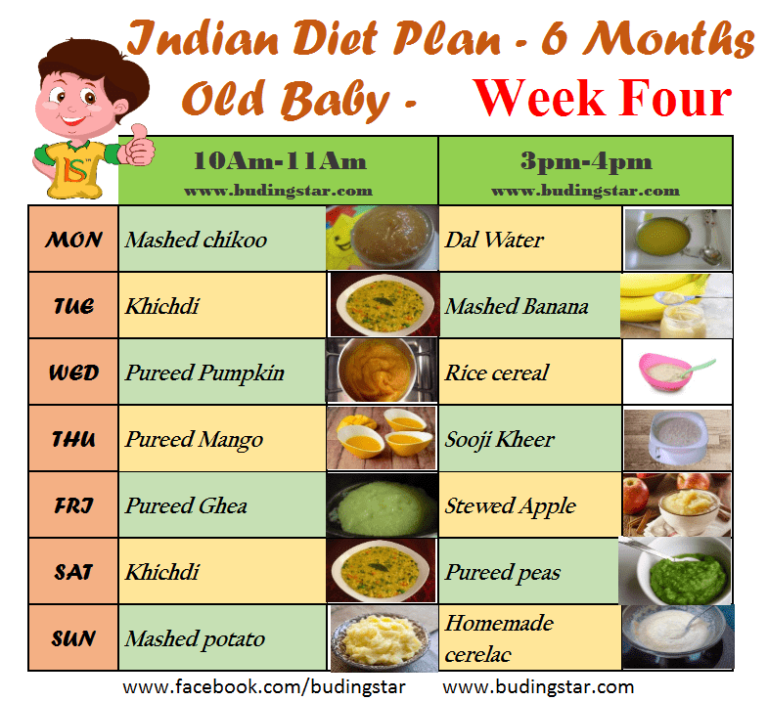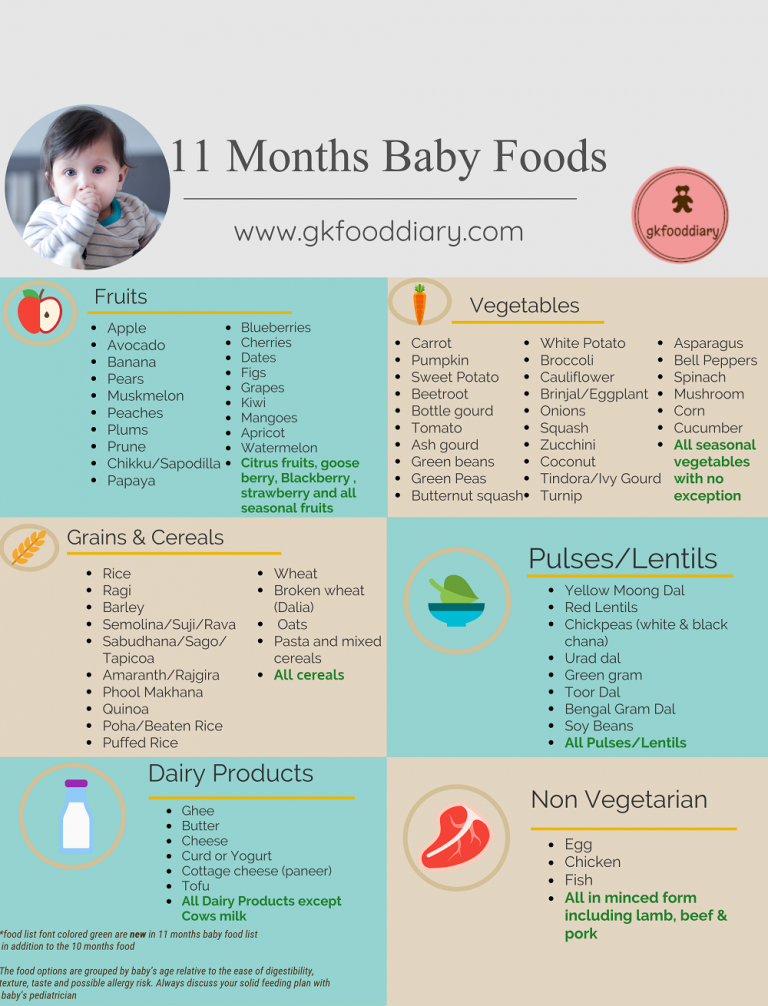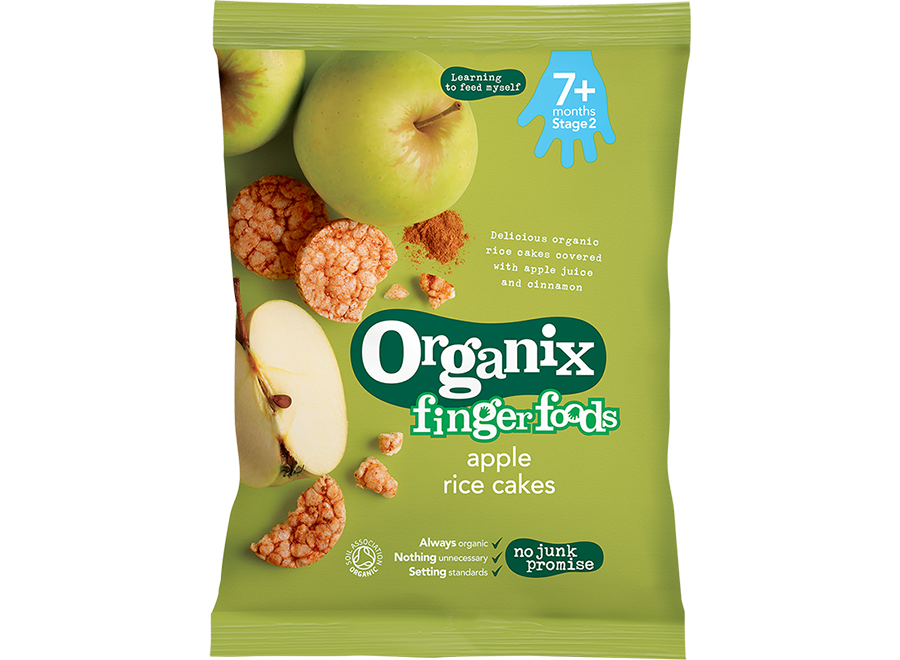When to spread out baby feedings
Breastfeeding: on Demand or Schedule
Read time: 5 minutes
What to know about breastfeeding on-demand versus on a schedule
Feeding needs vary depending on baby’s age
Know when to expect a natural feeding pattern to emerge
Understand your baby’s and your body’s signs that it’s time to feed
Many new parents wonder if they should be breastfeeding on demand or on a schedule. On demand breastfeeding, also called cue-based, baby-led, or responsive breastfeeding, is when you follow your baby’s cues for when and how much to feed. On the other hand, feeding on a schedule means you’re breastfeeding at specific times, and perhaps for a specific amount of time, that is not determined by the baby.10
Early on in your baby’s life, feeding on demand is best.1 Breastfeeding is instinctual for babies. They show hunger when their body needs nutrients and calories for growth and development. As soon as you see those feeding cues, let them drink up! In fact, breastfeeding on demand helps support a healthy breastmilk supply as well.2
Read on to learn about when it’s best to breastfeed on demand, and when you may finally start to see a feeding schedule begin to emerge.
How often does my newborn need to breastfeed?Breastmilk is easily digestible, and newborn’s stomachs are tiny, resulting in your baby needing to eat around the clock. Breastfed infants usually eat 8 to 12 times per 24 hours, or about every 1 to 3 hours.3,4 Each feed may last anywhere from 15 minutes to 20 minutes per breast, give or take depending on each infant.5
Frequent on-demand feedings benefit both you and your baby. Breastmilk production works by supply and demand, the more you feed, the more milk the body will make. 6 Following your baby’s lead and feeding as frequently as they demand will help your body know exactly how much milk it needs to make to meet your baby’s needs. Scheduled feeds may interrupt this natural process of milk production.
6 Following your baby’s lead and feeding as frequently as they demand will help your body know exactly how much milk it needs to make to meet your baby’s needs. Scheduled feeds may interrupt this natural process of milk production.
Read more: Breastfeeding: How to Support a Good Milk Supply
How do I know when my breastfed baby is hungry?Signs that your baby is hungry and ready to breastfeed include:
Becoming more alert
Putting their hands or fingers on or in their mouth
Making sucking motions or sounds
Sticking their tongue out or smacking lips
Rooting (moving their jaw and mouth or head in search of the breast).7
Many caregivers think crying is the main sign of hunger, however crying is actually a late-stage hunger cue and a sign of distress. Watch for earlier hunger cues, as once a baby is crying, it can be harder to get them to latch onto the breast and feed. 7,8
7,8
Read more: Understanding Your Baby’s Hunger and Fullness Cues
How much breastmilk can your breasts hold? Does breast size affect breastmilk production?The good news is that total volume of milk you’re able to make per day is not related to the size of your breast.2 The size of your breast is solely related to the amount of fatty tissue. However, the capacity of your milk-making glandular tissue to hold breastmilk is strictly related to how much milk you can store at one time.2
People with a smaller breastmilk storage capacity may need to feed their babies more often for their little one to get enough.2,9 With this smaller capacity, your breasts may feel full often, and it may be best to feed baby (or express milk) when you feel the sensation to release milk. This helps to keep the milk flowing, which can help prevent problems such as leaking, engorgement, low supply, plugged ducts, and mastitis.9,12
This helps to keep the milk flowing, which can help prevent problems such as leaking, engorgement, low supply, plugged ducts, and mastitis.9,12
Learn about: Avoiding and Managing Blocked Ducts while Breastfeeding
Responsive feeding for healthy growth in breastfed babiesIn the first year of life your baby has very high calorie needs in proportion to their small body size. The average baby will triple their birth weight in the first year.12,13 All of this growth is dependent on good feeding practices. Meeting your baby’s needs by feeding on demand in response to their cues ensures adequate growth, nutrient intake, and helps promote the essential bonding moments that happen between baby and caregiver.
It can be tempting to encourage your baby to stay at the breast and feed more, or feed more often than they are asking; however, unless your doctor has instructed you to do so, it’s better to allow your baby to guide the feeding. Let them decide how slow, how often, and how much they eat.1 This is called responsive feeding, and it’s the practice of following and responding to your baby’s hunger and fullness cues.
Let them decide how slow, how often, and how much they eat.1 This is called responsive feeding, and it’s the practice of following and responding to your baby’s hunger and fullness cues.
You will learn about how often and for how long your baby typically breastfeeds. Over time, your baby will fall into their own breastfeeding schedule, which will then continually change over time. And don’t be surprised if the amount your baby drinks varies throughout the day. Just like adults, babies don’t need all their feeds to be the same size.4
When does a breastfeeding schedule emerge?At around 3 to 4 months old, you may notice a more predictable feeding pattern emerge. For example, your baby may begin to space out feedings from every 2 to 3 hours to every 3 to 4 hours. This type of pattern is helpful in creating a natural breastfeeding rhythm and routine, but don’t assume that this is the way feeding will go from now on. Babies are constantly growing, and their needs will change frequently to support that growth.
Babies are constantly growing, and their needs will change frequently to support that growth.
The schedule may still shift from day to day and will continue to change as your baby grows. A baby is a little person after all; some days they’re hungrier than others, so continue to watch for your baby’s hunger cues and make adjustments accordingly.
Wondering if your baby’s feeding pattern is normal and meeting their needs? Reach out to our team of registered dietitians and lactation consultants for free! They’re here to help on our free to live chat from Monday – Friday 8am - 6pm (ET), and Saturday – Sunday 8am - 2pm (ET). Chat Now!
Breastfeeding on-demand and cluster feedingBabies have multiple growth spurts during their first 6 months. During these times your little one needs more calories and nutrients to meet their growth and development needs, so for a couple days they’ll seem like all they want to do is feed, feed, feed all day long. This is called ‘cluster feeding’. Some babies even act fussier at the breast during these times.15
Some babies even act fussier at the breast during these times.15
The good news is that feeding this frequently helps your body make more breastmilk to meet baby’s growing needs.14
When can you expect growth spurts and cluster feeding?
2 – 3 weeks
4 - 6 weeks
3 months
6 months14
Cluster feeding can also happen for some babies every day at a certain time of day. For example, some little ones cluster feed every evening before bed for the first 4 to 6 weeks of life.15 By following your baby’s lead and feeding on demand, you will help meet their needs as well as support your breastmilk supply.
Read about: Dealing with Low Breastmilk Supply
Starting solids and baby’s breastfeeding scheduleAt around 6 months old, when babies typically begin solids, a more consistent feeding schedule often develops. Sometimes these schedules mimic parents eating schedules or daycare schedules but just as often they don’t, so be prepared to meet baby’s schedule rather than have him meet yours.
Sometimes these schedules mimic parents eating schedules or daycare schedules but just as often they don’t, so be prepared to meet baby’s schedule rather than have him meet yours.
By 6 months most babies’ feeding schedules consist of a breastfeeding at least 6 to 8 times per 24 hours (sometimes more!) as well as solid food feeding 1 to 2 times per day.4
If your baby seems less interested in breastfeeding once solids are introduced, be sure to provide breastmilk before offering solids.4 Breastmilk should remain the primary source of calories and nutrients for babies under the age of 1 year.16
Read more:
Meal Plan for 6 to 9 Month Old Baby
Introducing Solids: First Foods and Textures
Why might breastfeeding on a schedule not work?If you were to schedule breastfeeding sessions rather than listen to your baby and your body, there is a higher likelihood of your breastmilk supply reducing. This is especially true if a schedule is implemented during the first few months of life when your breastmilk supply is so highly reliant upon your body learning how much milk to make from how much milk your baby asks for.2,9
This is especially true if a schedule is implemented during the first few months of life when your breastmilk supply is so highly reliant upon your body learning how much milk to make from how much milk your baby asks for.2,9
For some women, scheduled feedings may lead to some unpleasant side effects, such as increased risk of clogged ducts, painful engorgement, and ultimately low supply.2,11
What should I do to support my breastfed baby’s feeding schedule?Know that the newborn feeding pattern is usually the toughest and most unpredictableIf you’re in the thick of the first 8 weeks, take a deep breath! You and baby are both still learning, and things will get easier for both of you with time. Focus on baby’s feeding cues and know most newborns will breastfeed 8 to 12 times per 24 hours.
Remember that your baby will likely start to space out their feedings in a more predictable pattern after 3 to 4 months.
Know if your baby is getting enough breastmilkHaving your little one demand to eat often can sometimes make us doubt our breastmilk supply. The good news is that usually there is no problem with how much we are producing!
Here is how you’ll know your baby is getting enough breastmilk:
Baby is making 5+ wet diapers per 24 hours
Baby is making 3 to 4 (or more) dirty diapers per 24 hours
Baby seems satisfied and happy between feedings
Baby is gaining weight well18,19
Using breast compressions while baby is feeding can help push more milk out to help your little one stay interested in the feed and help them get enough.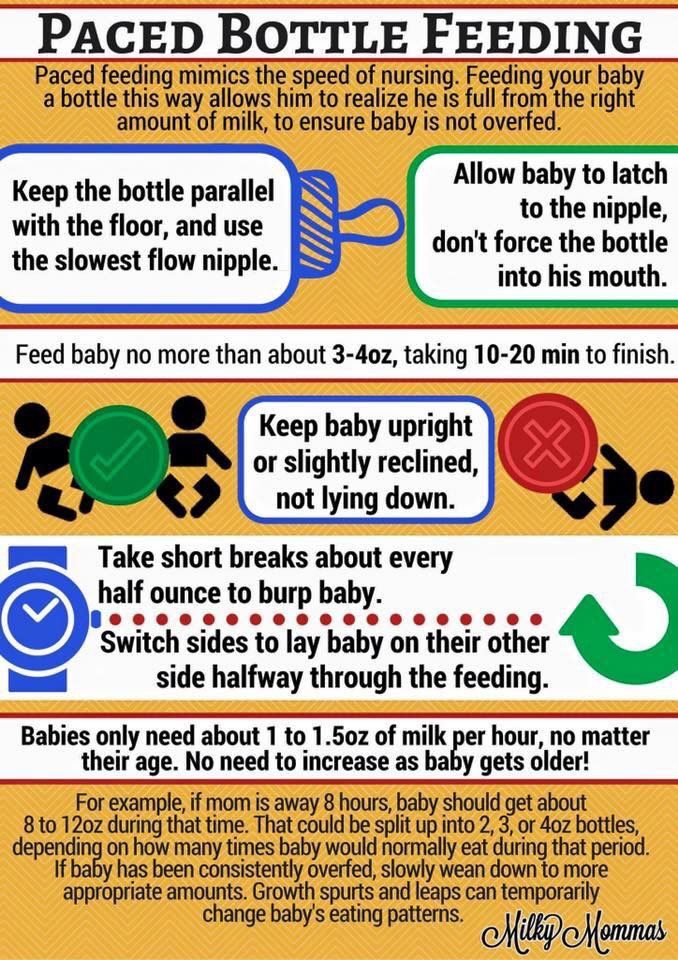 This is particularly helpful if your little one is not an efficient feeder quite yet or if they are falling asleep at the breast too soon.17
This is particularly helpful if your little one is not an efficient feeder quite yet or if they are falling asleep at the breast too soon.17
Place your hand around the breast with your thumb on one side (the top side is usually easiest) and your fingers on the other side. Your hand should be close to your chest wall, leaving plenty of space around your areola.17 Gently squeeze your breast and hold.
This technique may be helpful but is not guaranteed, and it’s important not to do this aggressively! The compressions should not be painful.
Read more: How and When to Hand Express
Build a strong support networkBreastfeeding is a demanding job and may come with some challenges. Reach out to friends and family members who have breastfed and find a local breastfeeding support group.
If you’re facing significant breastfeeding challenges, you may want to seek out an in-person lactation consultant (IBCLC) for help.
We know parenting often means sleepless nights, stressful days, and countless questions and confusion, and we want to support you in your feeding journey and beyond.
Our Happy Baby Experts are a team of lactation consultants and registered dietitians certified in infant and maternal nutrition – and they’re all moms, too, which means they’ve been there and seen that. They’re here to help on our free, live chat platform Monday - Friday 8am - 6pm (ET), and Saturday - Sunday 8am - 2pm (ET).Chat Now!
Read more about the experts that help write our content!
For more on this topic, check out the following articles:Dealing With a Low Breastmilk SupplyBreastfeeding: How to Support a Good Milk Supply
Meal and Hydration Plan for Supporting Milk Supply
How to Choose the Right Breast Pump
6 Breastfeeding Positions for You and Your Baby
Top Tips for Pumping Breastmilk
Sources
Tips for the First Year
Every baby may get hungry on their own unique schedule. That said, most infants in the first months of life will eat every 2-4 hours, depending if they are nursing or drinking formula. Once they eat solids, they’ll gradually drink less.
That said, most infants in the first months of life will eat every 2-4 hours, depending if they are nursing or drinking formula. Once they eat solids, they’ll gradually drink less.
Eat, sleep, pee, poop, repeat. Those are the highlights of a day of the life of a brand-new baby.
And if you’re a new parent, it’s the eating part that may be the source of many of your questions and worries. How many ounces should your baby take? Do you wake a sleeping baby to eat? Why do they seem hungry all the time? When can your child start solids?
Questions abound — despite Grandma’s insistence, the answers have changed since you were a tot. It’s now recommended that newborns, even formula-fed ones, eat on demand (consider it good preparation for the teenage years) and that babies wait to start solid foods until they’re 4 to 6 months old.
On day one of life, your baby’s stomach is the size of a marble and can only hold 1 to 1.4 teaspoons of liquid at a time. As your baby gets older, their stomach stretches and grows.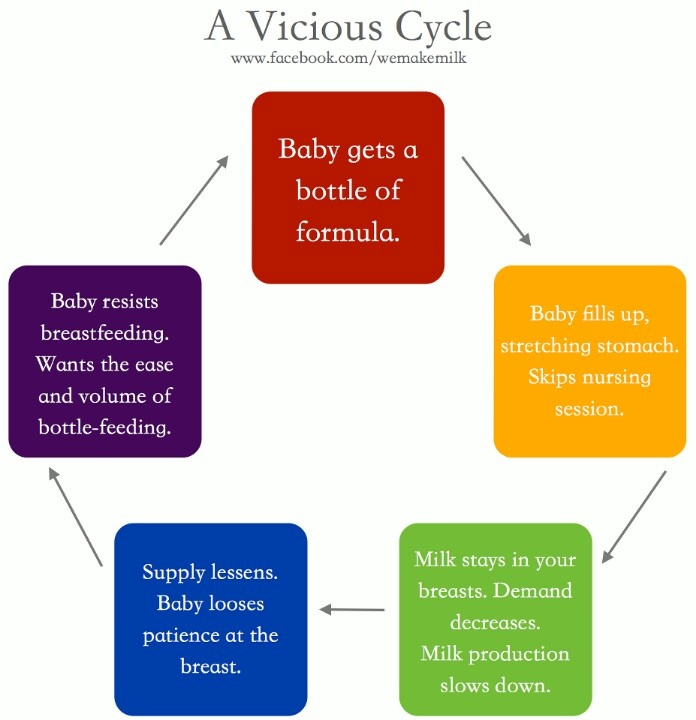
It’s hard (or impossible, really) to know how much milk your baby is taking in while breastfeeding. But if you’re bottle feeding due to any number of valid reasons, it’s a bit easier to measure.
Here, from the American Academy of Pediatrics (AAP), a typical feeding schedule for bottle-fed babies.
| Age | Ounces per feeding | Solid foods |
|---|---|---|
| Up to 2 weeks of life | .5 oz. in the first days, then 1–3 oz. | No |
| 2 weeks to 2 months | 2–4 oz. | No |
| 2–4 months | 4-6 oz. | No |
| 4–6 months | 4–8 oz. | Possibly, if your baby can hold their head up and is at least 13 pounds. But you don’t need to introduce solid foods yet. |
| 6–12 months | 8 oz. | Yes. Start with soft foods, like one-grain cereals and pureed vegetables, meats, and fruits, progressing to mashed and well-chopped finger foods. Give your baby one new food at a time. Continue supplementing with breast or formula feedings. Give your baby one new food at a time. Continue supplementing with breast or formula feedings. |
Every baby is unique — but one thing that’s pretty consistent is that breastfed babies eat more frequently than bottle-fed ones. That’s because breast milk is easily digested and empties from the stomach a lot quicker than formula.
Breastfed babies
There’s no rest for the weary. According to La Leche League International, you should begin nursing your baby within 1 hour of birth and provide about 8 to 12 feedings daily in the first few weeks of life (yeah, we’re exhausted for you).
At first, it’s important not to let your baby go more than 4 hours without feeding. You’ll likely need to wake them up if necessary, at least until breastfeeding is well established and they’re gaining weight appropriately.
As your baby grows and your milk supply amps up, your baby will be able to take in more milk in less time at one feeding. That’s when you might start to notice a more predictable pattern.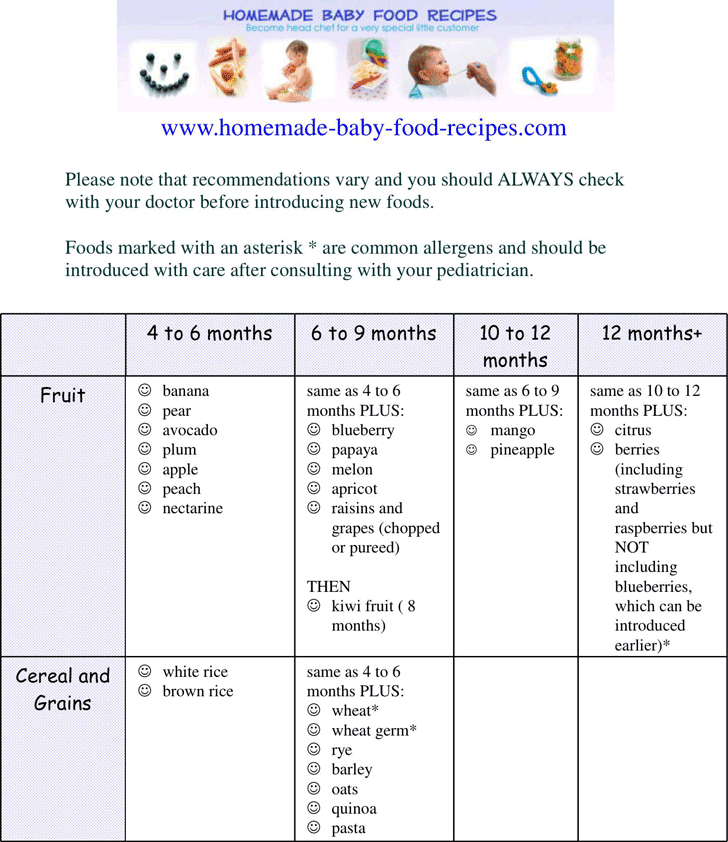
- 1 to 3 months: Your baby will feed 7 to 9 times per 24 hours.
- 3 months: Feedings take place 6 to 8 times in 24 hours.
- 6 months: Your baby will feed around 6 times a day.
- 12 months: Nursing may drop to about 4 times a day. The introduction of solids at about 6 months helps to fuel your baby’s additional nutritional needs.
Keep in mind that this pattern is just one example. Different babies have different paces and preferences, along with other factors that influence the frequency of feedings.
Bottle-fed babies
Like breastfed babies, bottle-fed newborns should eat on demand. On average, that’s about every 2 to 3 hours. A typical feeding schedule may look like this:
- Newborn: every 2 to 3 hours
- At 2 months: every 3 to 4 hours
- At 4 to 6 months: every 4 to 5 hours
- At 6+ months: every 4 to 5 hours
For both breastfed and bottle-fed babies
- Don’t give liquids other than formula or breast milk to babies under a year old.
That includes juices and cow’s milk. They don’t provide the right (if any) nutrients and can be upsetting to your baby’s tummy. Water can be introduced around 6 months when you start offering a cup.
- Don’t add baby cereal to a bottle.
- It can create a choking hazard.
- A baby’s digestive system isn’t mature enough to handle cereal until about 4 to 6 months of age.
- You could overfeed your baby.
- Don’t give your baby any form of honey until after their first birthday. Honey can be dangerous for a baby, occasionally causing what’s called infant botulism.
- Do adjust your expectations based on your baby and their unique needs. Premature babies are likely to follow feeding patterns according to their adjusted age. If your baby has challenges like reflux or failure to thrive, you may need to work with your doctor on the appropriate feeding schedule and amount they should be eating.
Schedules are the holy grail of every parent. Your child will naturally start to fall into a feeding pattern as their tummy grows and they can take in more breast milk or formula at one sitting. This may begin to happen between 2 and 4 months of age.
This may begin to happen between 2 and 4 months of age.
For now, though, focus on learning your baby’s hunger cues, such as:
- rooting around your chest, looking for a nipple.
- putting their fist in their mouth
- smacking or licking their lips
- fussing that can escalate quickly (don’t wait until your baby’s hangry to feed them)
Once your baby is a few months old, you may be able to introduce a sleep/feed schedule that works for you.
Let’s say, for example, your 4-month-old wakes every 5 hours for a feeding. That means if you feed at 9 p.m., your baby wakes around 2 a.m. But if you wake and feed the baby at 11 p.m., just before you go to bed, they may not rouse until 4 a.m., giving you a decent chunk of nighttime winks.
In general, if your baby seems hungry, feed them. Your baby will naturally eat more frequently during growth spurts, which typically occur around 3 weeks, 3 months, and 6 months of age.
Some babies will also “cluster feed,” meaning they’ll feed more frequently during certain periods and less at others. For example, your baby may cluster feed during the late afternoon and evening and then sleep longer at night (yay!). This is more common in breastfed babies than bottle fed babies.
Worried about overfeeding? While this isn’t really possible to do with an exclusively breastfed baby, you can overfeed a baby who’s taking a bottle — especially if they’re sucking on the bottle for comfort. Follow their hunger cues, but talk to your pediatrician if you’re worried your little one may be overeating.
Your baby is probably ready for solids if they’re 4 to 6 months old and:
- have good head control
- seem interested in what you’re eating
- reach for food
- weigh 13 or more pounds
Which food to start with? The AAP now says it doesn’t really matter much in what order you introduce foods. The only real rule: Stick with one food for 3 to 5 days before offering another. If there’s an allergic reaction (rash, diarrhea, vomiting are common first signs), you’ll know which food is causing it.
As your baby grows, move from pureed baby food to ones that have more texture (for example, mashed banana, scrambled egg, or well-cooked, chopped pasta). This generally happens around 8 to 10 months of age.
Your supermarket offers a variety of baby food products, but if you want to make your own, keep it sugar and salt free. Additionally, at this stage, don’t feed your baby anything that could be a choking hazard, including:
- hard foods, such as popcorn or nuts
- hard, fresh fruits, like apples; cook to soften or chop into very small pieces
- any meat that isn’t well cooked and very well chopped (this includes hot dogs)
- cheese cubes
- peanut butter (though talk to your pediatrician about this one — and the benefits of introducing diluted peanut butter before the age of 1)
As your baby nears their first birthday, they should be eating a variety of foods and taking in about 4 ounces of solids at each meal. Continue to offer breast milk or formula. By 8 months, babies are drinking about 30 ounces a day.
Oh yeah, and buy some stock in a company that makes stain-fighting laundry detergent. It’ll pay for college.
Babies aren’t cookie cutter. Some will gain weight easily, while others will have problems. Things that can affect a baby’s weight gain include:
- having a birth defect like a cleft lip or palate, which creates problems feeding
- having a milk protein intolerance
- being premature
- being fed with a bottle versus the breast
A 2012 study of more than 1,800 babies found that the infants who were fed with a bottle — regardless of whether the bottle contained breast milk or formula — gained more weight in the first year than babies who nursed exclusively.
Your baby’s doctor is the best one to advise you on a healthy weight range for your baby.
How, when, and what to feed a baby are top worries of every parent — but there’s good news: Most babies are pretty good judges of when they’re hungry and when they’re full — and they’ll let you know it.
You just need to present them with the right choices at the right time and pay attention to their cues. If you have any questions or concerns, your pediatrician is there to help you along the way.
Diet for a 4-6 month old baby
Your baby is already 4 months old. He has noticeably grown up, become more active, is interested in objects that fall into his field of vision, carefully examines and reaches for them. The emotional reactions of the child have become much richer: he joyfully smiles at all the people whom he often sees more and more often, makes various sounds.
You are still breastfeeding your baby or have had to switch to mixed or formula feeding. The child is actively growing, and only with breast milk or infant formula, he can no longer always get all the necessary nutrients. And that means it's time to think about complementary foods.
The optimal time to start its introduction is between 4 and 6 months, regardless of whether the baby is receiving breast milk or formula. This is the time when children respond best to new foods. Up to 4 months, the child is not yet ready to perceive and digest any other food. And with the late introduction of complementary foods - after 6 months, children already have significant deficiencies of individual nutrients and, first of all, micronutrients (minerals, vitamins, long-chain polyunsaturated fatty acids, etc.). In addition, toddlers at this age often refuse new foods, they have delayed development of chewing skills for thick foods, and inadequate eating habits are formed. It is important to know that, no matter how strange it may seem at first glance, with a delayed appointment of complementary foods, allergic reactions more often occur on them.
This is the time when children respond best to new foods. Up to 4 months, the child is not yet ready to perceive and digest any other food. And with the late introduction of complementary foods - after 6 months, children already have significant deficiencies of individual nutrients and, first of all, micronutrients (minerals, vitamins, long-chain polyunsaturated fatty acids, etc.). In addition, toddlers at this age often refuse new foods, they have delayed development of chewing skills for thick foods, and inadequate eating habits are formed. It is important to know that, no matter how strange it may seem at first glance, with a delayed appointment of complementary foods, allergic reactions more often occur on them.
When is it advisable to introduce complementary foods as early as 4 months, and when can you wait until 5.5 or even 6 months? To resolve this issue, be sure to consult a pediatrician.
As a rule, at an earlier age (4 - 4.5 months), complementary foods are introduced to children at risk of developing iron deficiency anemia, as well as children with insufficient weight gain and with functional digestive disorders.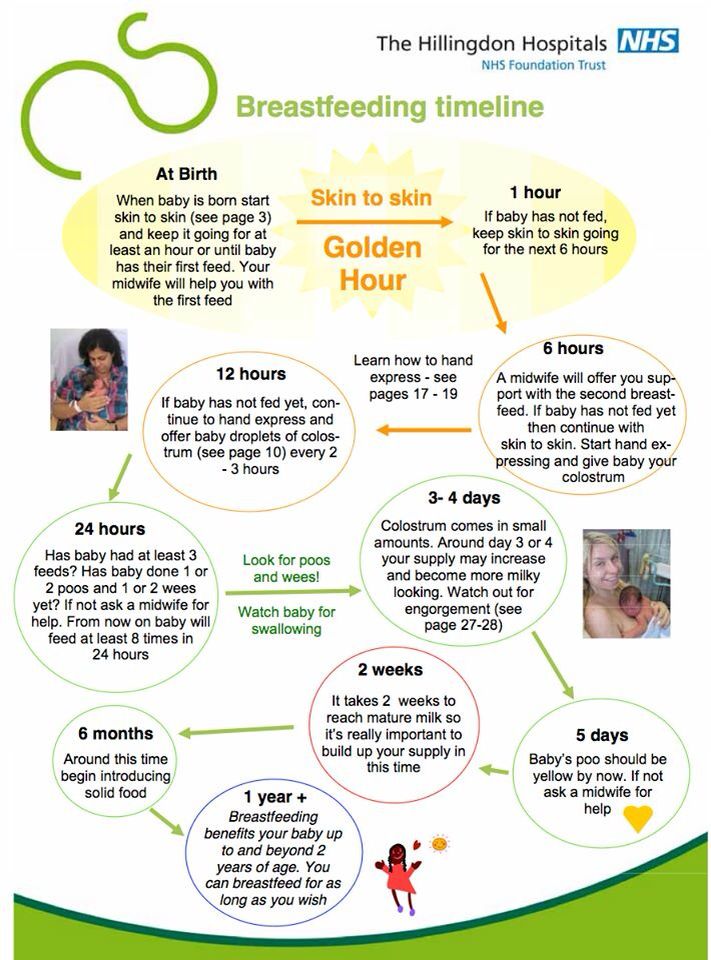
The optimal time to start complementary foods for a healthy baby is between 5 and 5.5 months of age.
The World Health Organization recommends that breastfed babies should be introduced to complementary foods from 6 months of age. From the point of view of domestic pediatricians, which is based on extensive practical experience and scientific research, this is possible only in cases where the child was born on time, without malnutrition (since in these cases the mineral reserves are very small), he is healthy, grows well and develops. In addition, the mother should also be healthy, eat well and use either specialized enriched foods for pregnant and lactating women, or vitamin and mineral complexes in courses. Such restrictions are associated with the depletion of iron stores even in a completely healthy child by 5-5.5 months of age and a significant increase in the risk of anemia in the absence of complementary foods rich or fortified with iron. There are other deficits as well.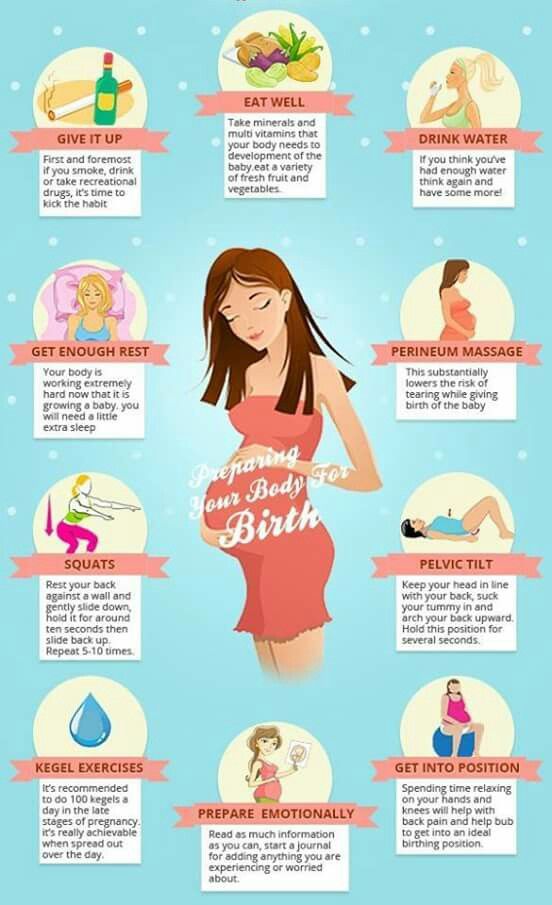
The first complementary food can be vegetable puree or porridge, fruit puree is better to give the baby later - after tasty sweet fruits, children usually eat vegetable puree and cereals worse, often refuse them altogether.
Where is the best place to start? In cases where the child has a tendency to constipation or he puts on weight too quickly, preference should be given to vegetables. With a high probability of developing anemia, unstable stools and small weight gains - from baby cereals enriched with micronutrients. And if you started introducing complementary foods with cereals, then the second product will be vegetables and vice versa.
If the first complementary food is introduced at 6 months, it must be baby porridge enriched with iron and other minerals and vitamins, the intake of which with breast milk is no longer enough.
Another important complementary food product is mashed meat. It contains iron, which is easily absorbed. And adding meat to vegetables improves the absorption of iron from them. It is advisable to introduce meat puree to a child at the age of 6 months. Only the daily use of children's enriched porridge and meat puree can satisfy the needs of babies in iron, zinc and other micronutrients.
But it is better to introduce juices later, when the child already receives the main complementary foods - vegetables, cereals, meat and fruits. After all, complementary foods are needed so that the baby receives all the substances necessary for growth and development, and there are very few in their juices, including vitamins and minerals.
Juices should not be given between feedings, but after the child has eaten porridge or vegetables with meat puree, as well as for an afternoon snack. The habit of drinking juice between meals leads to frequent snacking in the future, a love of sweets is instilled, children have more tooth decay and an increased risk of obesity.
With the start of the introduction of complementary foods, the child is gradually transferred to a 5-time feeding regimen.
Rules for the introduction of complementary foods:
- preference should be given to baby products of industrial production, they are made from environmentally friendly raw materials, have a guaranteed composition and degree of grinding
- Complementary foods should be offered to the baby by spoon at the start of feeding, before breastfeeding (formula feeding)
- the volume of the product increases gradually, starting with ½ - 1 spoon, and in 7 - 10 days we bring it to the age norm, subsequent products within the same group (cereals from other cereals or new vegetables)
- can be entered faster, in 5 - 7 days
- start introduction with monocomponent products
- it is undesirable to give a new product in the afternoon, it is important to follow how the child reacts to it
- do not introduce new products in the event of acute illnesses, as well as before and immediately after prophylactic vaccination (should be abstained for several days)
When introducing a new type of complementary food, first try one product, gradually increasing its amount, and then gradually “dilute” this product with a new one. For example, vegetable complementary foods can be started with a teaspoon of zucchini puree. During the week, give the baby only this product, gradually increasing its volume. After a week, add a teaspoon of mashed broccoli or cauliflower to the zucchini puree and continue to increase the total volume every day. Vegetable puree from three types of vegetables will be optimal. The portion should correspond to the age norm. Over time, you can replace the introduced vegetables with others faster.
For example, vegetable complementary foods can be started with a teaspoon of zucchini puree. During the week, give the baby only this product, gradually increasing its volume. After a week, add a teaspoon of mashed broccoli or cauliflower to the zucchini puree and continue to increase the total volume every day. Vegetable puree from three types of vegetables will be optimal. The portion should correspond to the age norm. Over time, you can replace the introduced vegetables with others faster.
After the introduction of one vegetable (bringing its volume to the required amount), you can proceed to the intake of porridge, and diversify the vegetable diet later.
If the child did not like the dish, for example, broccoli, do not give up and continue to offer this vegetable in a small amount - 1-2 spoons daily, you can not even once, but 2-3 times before meals, and after 7 - 10, and sometimes 15 days, the baby will get used to the new taste. This diversifies the diet, will help to form the right taste habits in the baby.
Spoon-feeding should be done with patience and care. Forced feeding is unacceptable!
In the diet of healthy children, porridge is usually introduced after vegetables (with the exception of healthy breastfed children, when complementary foods are introduced from 6 months). It is better to start with dairy-free gluten-free cereals - buckwheat, corn, rice. At the same time, it is important to use porridge for baby food of industrial production, which contains a complex of vitamins and minerals. In addition, it is already ready for use, you just need to dilute it with breast milk or the mixture that the baby receives.
Children suffering from food allergies are introduced complementary foods at 5-5.5 months. The rules for the introduction of products are the same as for healthy children, in all cases it is introduced slowly and begins with hypoallergenic products. Be sure to take into account individual tolerance. The difference is only in the correction of the diet, taking into account the identified allergens. From meat products, preference should first be given to mashed turkey and rabbit.
From meat products, preference should first be given to mashed turkey and rabbit.
Diets for different age periods
Explain how you can make a diet, it is better to use a few examples that will help you navigate in compiling a menu specifically for your child.
From 5 months, the volume of one feeding is on average 200 ml.
Option 1.
If your baby started receiving complementary foods from 4-5 months, then at 6 months his diet should look like this:
| I feeding 6 hours | Breast milk or VHI* | 200 ml |
| II feeding 10 hours | Dairy-free porridge** Supplementation with breast milk or VHI* | 150 g 50 ml |
| III feeding 14 hours | Vegetable puree Meat puree Vegetable oil Supplemental breast milk or VHI* | 150 g 5 - 30 g 1 tsp 30 ml |
| IV feeding 18 hours | Fruit puree Breast milk or VHI* | 60 g 140 ml |
| V feeding 22 hours | Breast milk or VHI* | 200 ml |
* - infant formula
** - diluted with breast milk or VHI
Option 2.
* - infant formula Option 3. : ** - diluted with breast milk Up to 7 months, increase the volume of porridge and vegetable puree to 150 g and introduce fruit puree. The materials were prepared by the staff of the Healthy and Sick Child Nutrition Laboratory of the National Research Center for Children's Health of the Ministry of Health of Russia and are based on the recommendations given in the National Program for Optimizing the Feeding of Children in the First Year of Life in the Russian Federation, approved at the XV Congress of Pediatricians of Russia (02.2009d.) Polina Alexandrovna Kizino pediatrician, perinatal psychologist What foods to start complementary foods with and how to diversify the diet of a child up to a year? Healthy baby food menu and recommendations for baby food. — Polina Alexandrovna, please tell us what complementary foods are. - Complementary foods can be called a way to transition from milk feeding (breast, mixed or artificial feeding) to "adult" food, which the child will consume after some time from the common table. — When to start complementary foods, what recommendations do doctors give? - There are several recommendations for the introduction of complementary foods: Complementary foods are introduced more often: Important! "Hypoallergenic corridor" - a period from 4 to 7 months, during which you can enter the maximum number of products with the lowest risk of allergies in the baby. Try MAMAKO ® baby food with goat's milk - delicate cereals, cream soups and purees with fruits and vegetables to expand your baby's diet. - Polina Alexandrovna, how can a mother correctly compose a child's menu during the day? — When a mother is just starting to introduce a new food to a child, it must be taken into account that there is always the possibility of developing allergic reactions. - What products can be included in the menu of the morning complementary foods for babies? - If we talk about complete complementary foods (the baby is already familiar with different types of food), then in the morning we will most likely give the baby porridge. Porridge contains carbohydrates and other nutrients, gives the child a supply of energy and strength to actively start the morning, and during the day to maintain activity, allows you to play calmly, without feeling hungry. — What to give to a baby during the day? — If this is the first and second complementary foods, then, most likely, the child will receive only vegetables for lunch. Over time, the baby's diet expands, he additionally receives dairy and meat products. Cream soups MAMAKO ® are the only children's cream soups based on goat's milk. They do not require cooking and help to diversify the baby's vegetable complementary foods. Soups MAMAKO ® is 100% natural vegetables, the benefits of goat's milk and a delicate creamy taste. — What complementary food is better to give the baby for an afternoon snack and what to feed him in the evening? — In the evening, you should try to give lighter food so as not to overload the child — vegetables or fruit puree. You can supplement it with cottage cheese or other dairy product. If the child does not tolerate the breaks between night feedings and often asks for food at night, it is sometimes acceptable to give porridge at night (including milk porridge if it is age appropriate). — Why is it better to give your child different foods? - At some point, the child will begin to consume adult food. And the sooner his mother starts to introduce him to different textures and products, different forms and presentation, the faster he will get used to it and it will be easier to switch to the “adult” table. If a child gets used to eating only mashed potatoes and liquid foods, then diversifying his diet is already quite difficult (the child will not be interested, he will continue to eat only mashed potatoes - this is easy and no effort is needed). — At what age is it better to diversify baby food? — From the very beginning of the introduction of complementary foods, we try to diversify it. If vegetables are introduced as the first complementary food, then the baby will try two or three vegetables. Advice to mom: the older the child becomes, the more varied and intense new foods should appear in his diet in order to reduce the risk of allergies to them in the future. When you first introduce your child to new foods, try to introduce them to the child's diet in the morning to monitor the reaction. After the child has become acquainted with some products, you can distribute them throughout the day. This is done so that during the day the child has enough energy to play and develop, to be in a good mood, and in the evening not to overload the gastrointestinal tract. Then your baby will fall asleep comfortably and sleep throughout the night. * Breast milk is the best food for babies. WHO recommends exclusive breastfeeding for the first 6 months of a child's life and continued breastfeeding after complementary foods are introduced until the age of 2 years. Before introducing new products into the baby's diet, you should consult with a specialist. The material is for informational purposes and cannot replace the advice of a healthcare professional. #Food #oatmeal Introduction of complementary foods #Complementary food Kiseleva Elena Sergeevna Candidate of Medical Sciences, Scientific Advisor MAMAKO ® Baby's first porridge #Complementary food Expert MAMACO ® Puree for complementary foods #Complementary food Butuzova Olesya Vladimirovna pediatrician When to start complementary foods. First food #Food #first food #organic cereal buckwheat #organic porridge rice #set first lure #buckwheat #corn #rice Shcherbakova Alla Anatolyevna Candidate of Medical Sciences, pediatrician, gastroenterologist See all View all View all Purée for complementary foods # Lure Butuzova Olesya Vladimirovna pediatrician When to start complementary foods. I feeding
6 hours Breast milk or VHI* 200 ml II feeding
10 hours Dairy-free porridge**
Fruit puree 150 g
20 g III feeding
14 hours Vegetable puree
Meat puree Vegetable oil
Fruit juice 150 g
5 - 30 g
1 tsp
60 ml IV feeding
18 hours Fruit puree
Breast milk or VHI* 40 g
140 ml V feeding
22 hours Breast milk or VHI* 200 ml
** - diluted with breast milk or VMS 
I feeding
6 hours Breast milk II feeding
10 hours Dairy-free porridge**
Breast milk supplement 100 g III feeding
14 hours Vegetable puree
Meat puree Vegetable oil
Breast milk supplement 100 g
5 - 30 g
1 tsp IV feeding
18 hours Breast milk V feeding
22 hours Breast milk
Complementary foods menu: what is better to give in the morning, afternoon and evening

 Even if hypoallergenic foods are given, it is important to check how the child reacts to them. Therefore, it is advisable to give new products in the morning in order to have time to track the reaction that may occur in the child.
Even if hypoallergenic foods are given, it is important to check how the child reacts to them. Therefore, it is advisable to give new products in the morning in order to have time to track the reaction that may occur in the child.  For a daily meal, you can consider cream soups from MAMAKO ® with vegetables in goat's milk, so that lunch is as complete as possible in its composition.
For a daily meal, you can consider cream soups from MAMAKO ® with vegetables in goat's milk, so that lunch is as complete as possible in its composition.
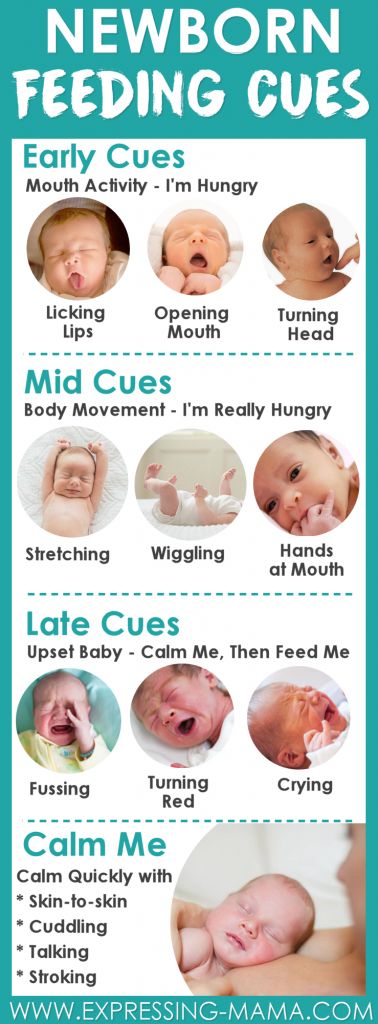
 If porridge is introduced second, then first he will try one porridge, then the second, the third. To say that diversity begins at a certain age is rather difficult, it begins from the first weeks of introducing complementary foods to a small child.
If porridge is introduced second, then first he will try one porridge, then the second, the third. To say that diversity begins at a certain age is rather difficult, it begins from the first weeks of introducing complementary foods to a small child.
A variety of cereals helps to choose a product that meets the needs of the child in the initial stages of the introduction of complementary foods and the stage of expansion of nutrition. For example, for a younger child, this is porridge with goat milk from one cereal, to expand the diet - porridge from seven cereals, cereals with the addition of fruits and berries.
Goat's milk, unlike cow's milk, has a lower potential risk of developing allergies.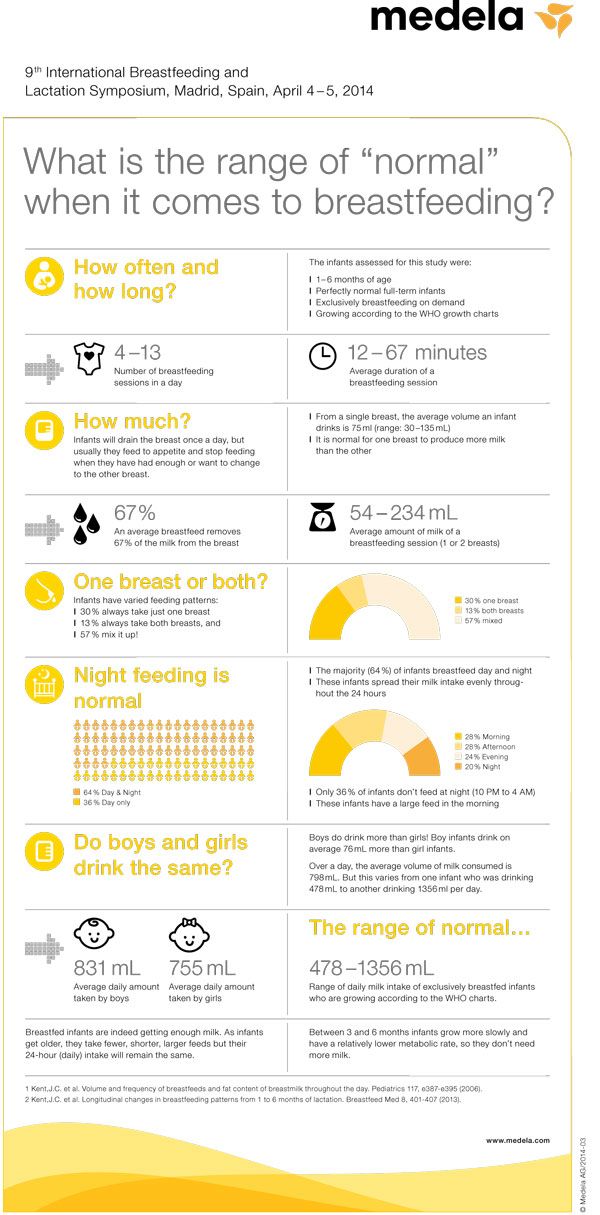 And if you choose between goat's and cow's milk, it is better to prefer goat's milk cereals to minimize the risk of allergies in a child.
And if you choose between goat's and cow's milk, it is better to prefer goat's milk cereals to minimize the risk of allergies in a child.  For feeding children from birth.
For feeding children from birth. 








